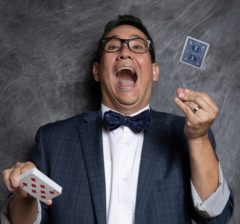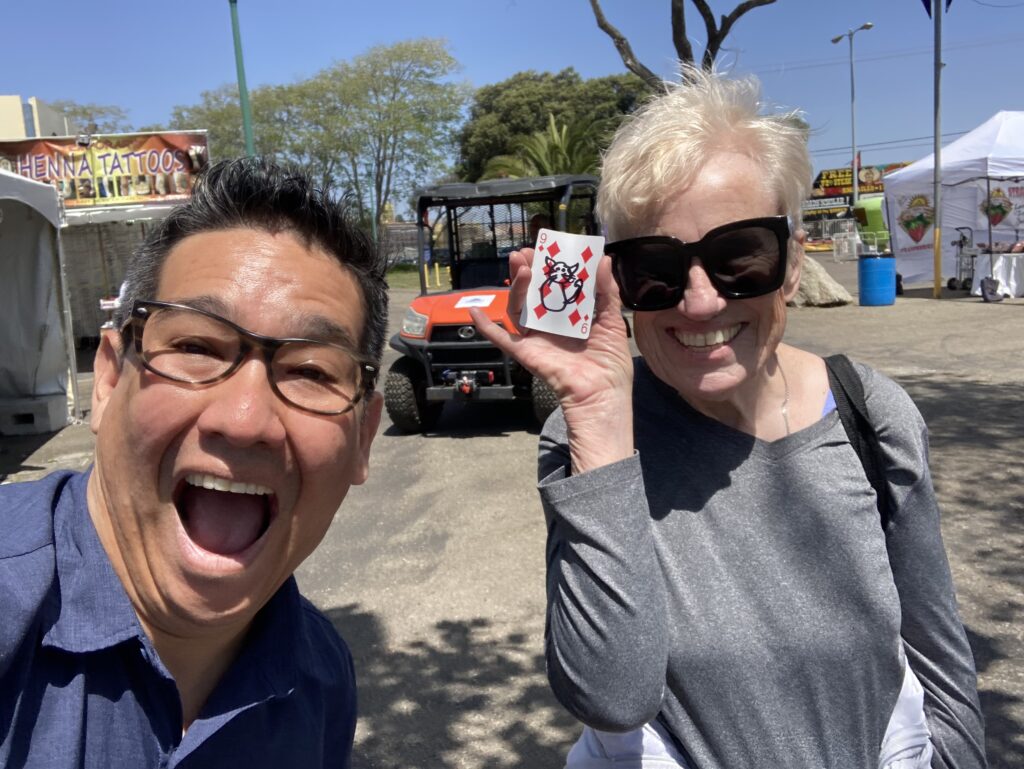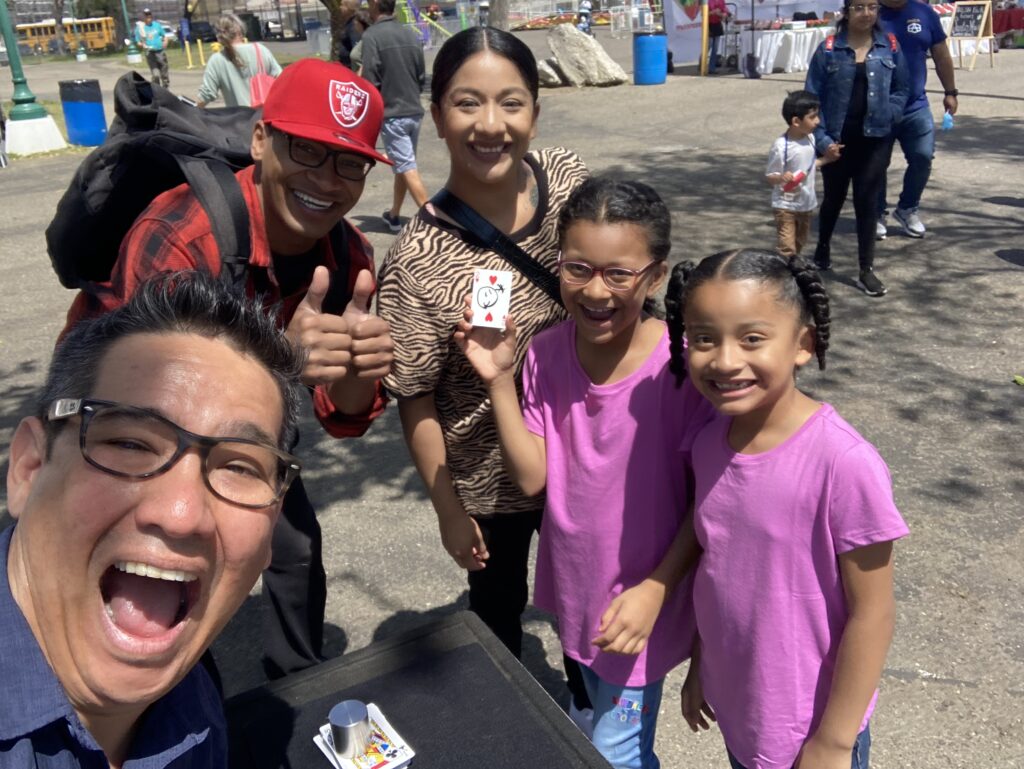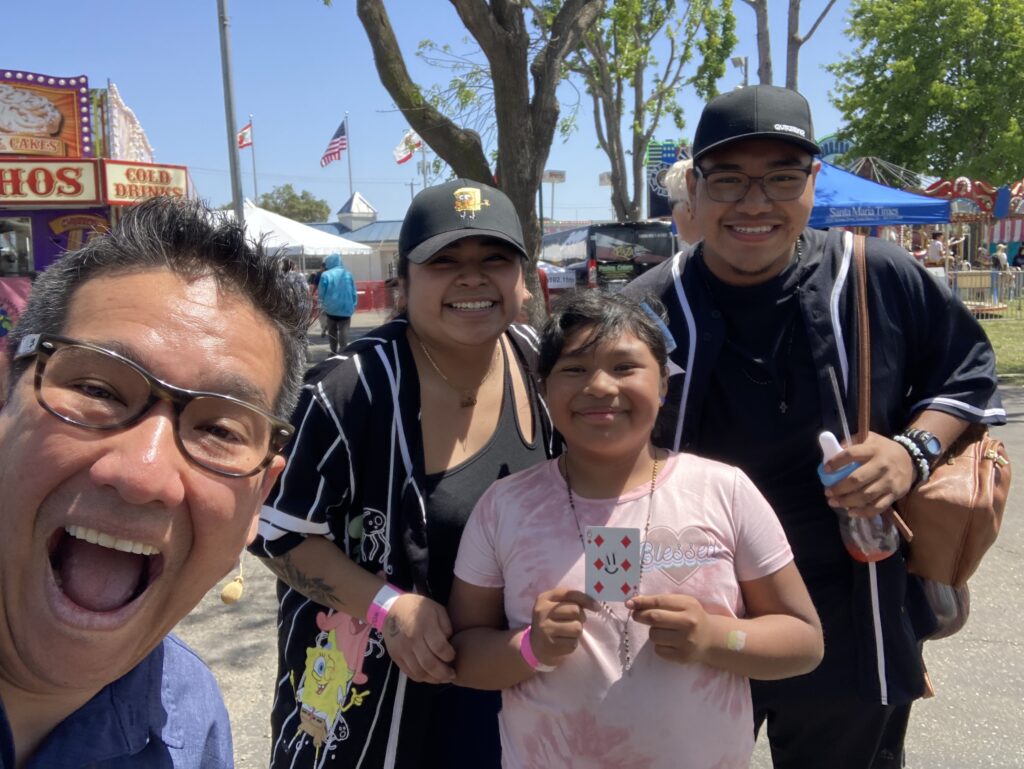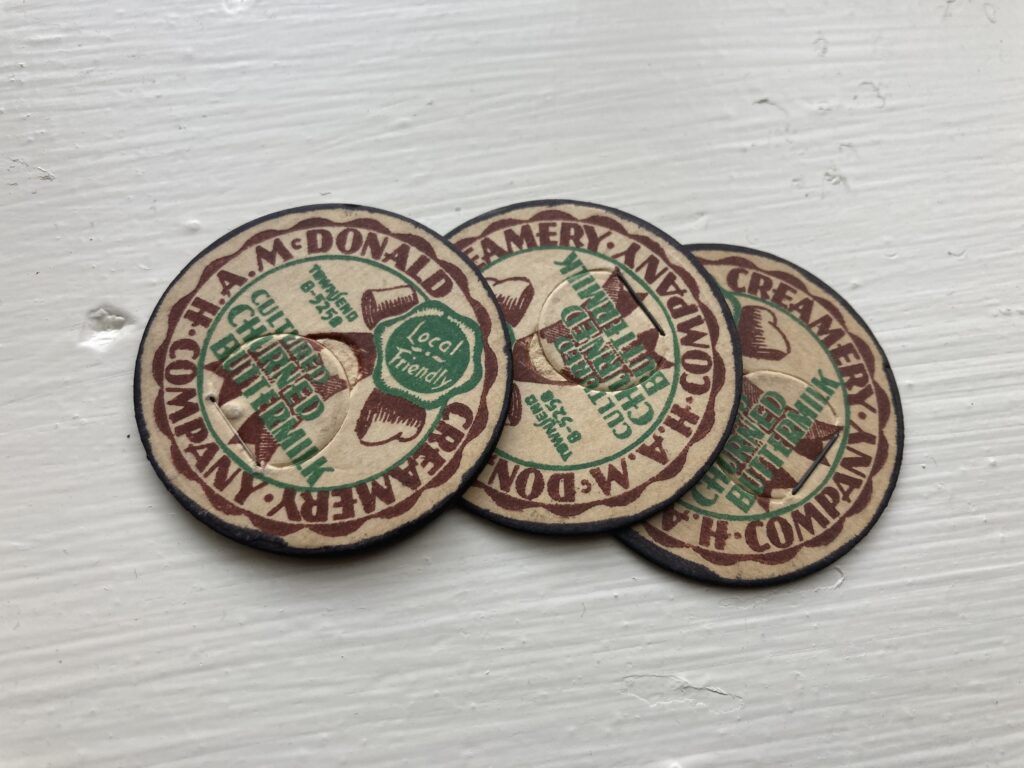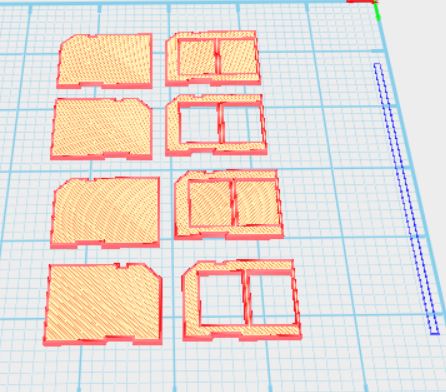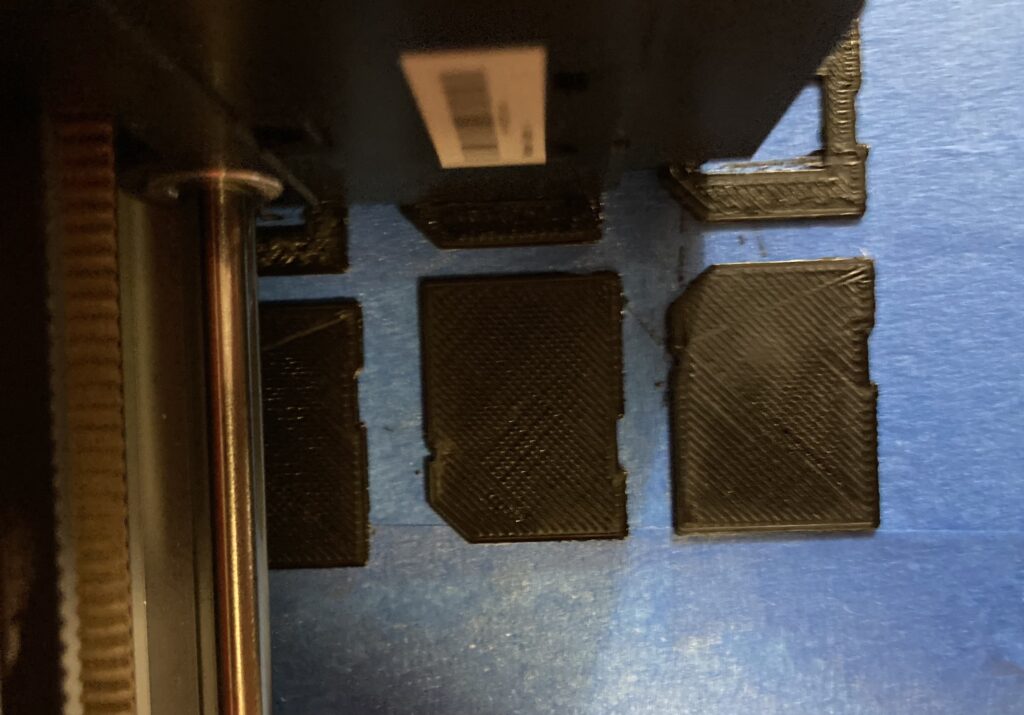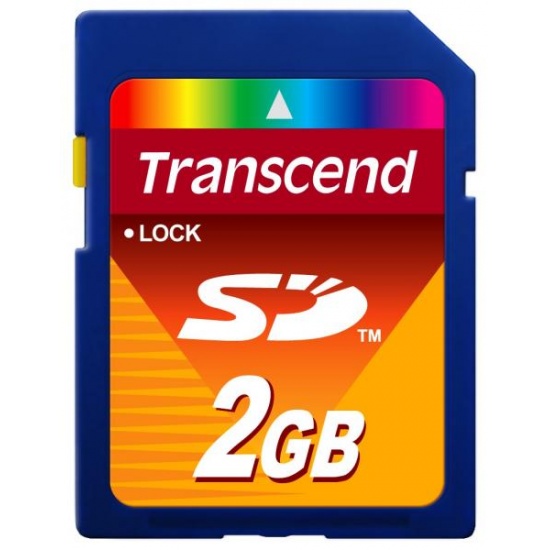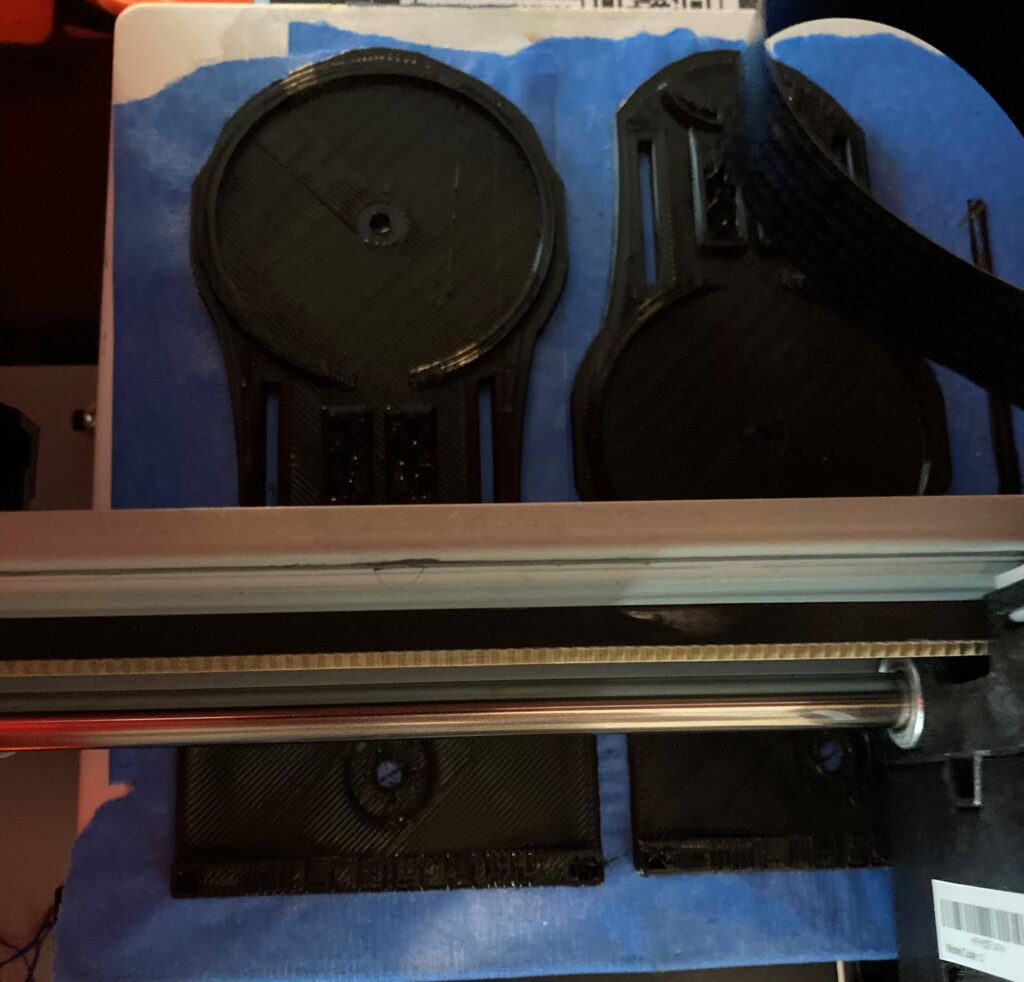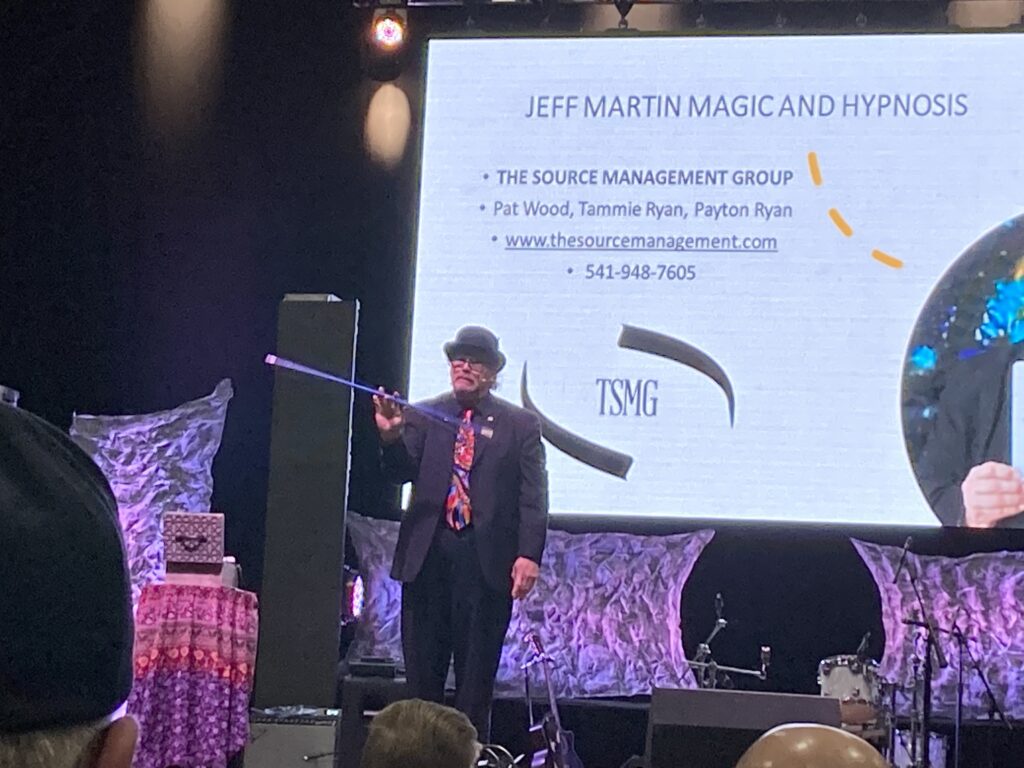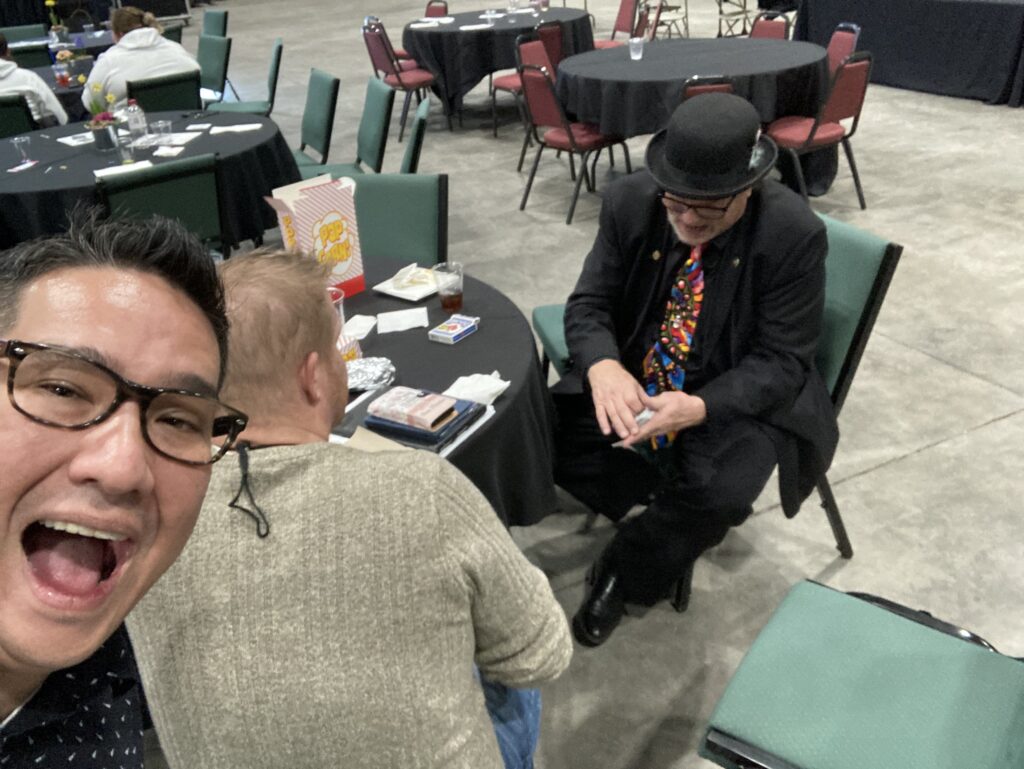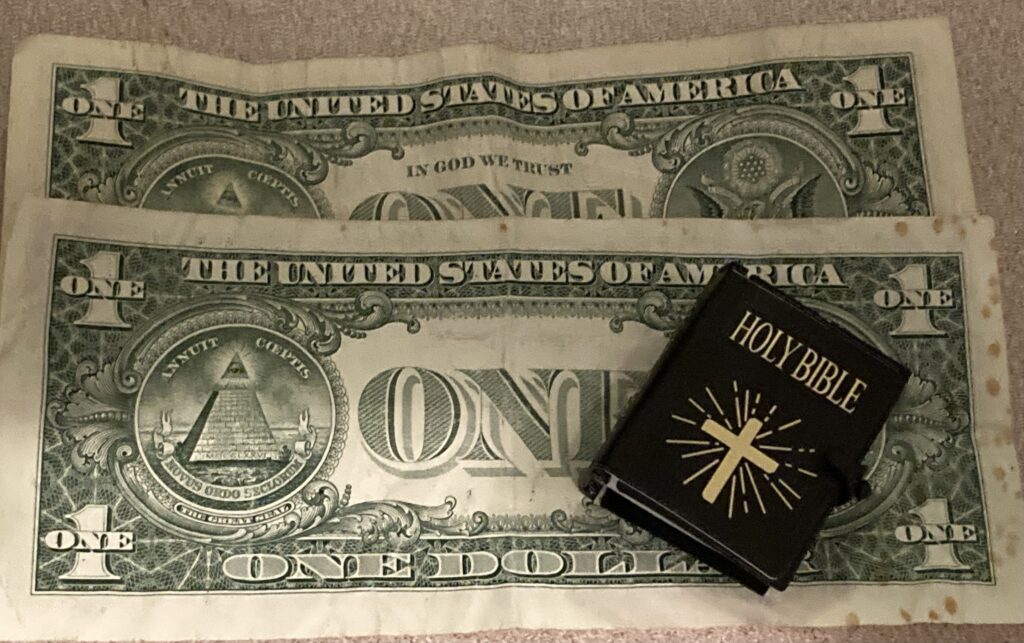The trick I’m working on today uses a spoon. Here’s the first proof of concept video of it:
I found the tiny spoon at a garage sale a few months ago, and have been trying to think of a use for it. Obviously it would be some sort of shrinking or growing effect. For the method, I think the first shrink is interesting, the final shrink is less interesting to me.
For the first shrink I really stumbled upon when I was working on a different trick with a spoon, and realized I could essentially make the first shrink self contained. That eliminated the need to have to steal anything or ditch anything initially. Ideally, if I could avoid sleeving the spoon for the second shrink, that would be the best, however I can’t think of a way to do that without ditching the spoon. The nice thing about sleeving (or using a topit) is that you end with nothing palmed.
-Louie
